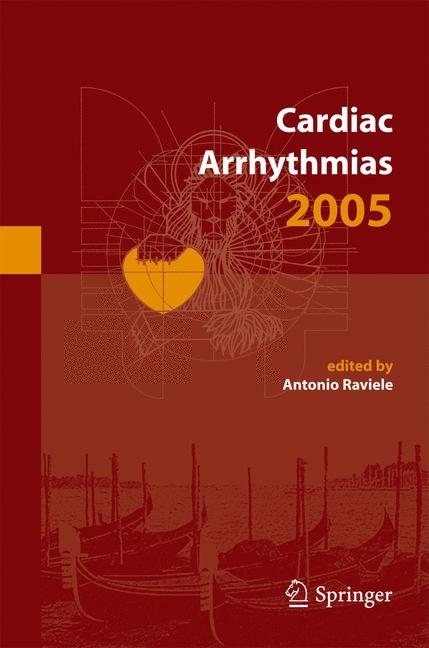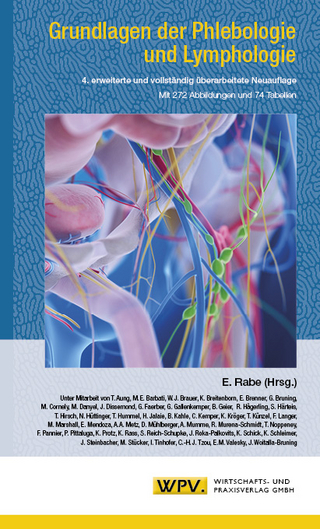
Cardiac Arrhythmias 2005
Springer Verlag
978-88-470-0370-5 (ISBN)
- Titel ist leider vergriffen;
keine Neuauflage - Artikel merken
The year 1988 marked the beginning of the International Workshop on Cardiac Arrhythmias. This biannual series of meetings was initiated with the following goals: (1) to present technological advances in the field of cardiac arrhythmias, (2) to publicise the results of current research, and (3) to assess the impact of new diagnostic and therapeutic approaches. In addition, by bringing together experts in this field, controversial aspects in the diagnosis and treatment of cardiac arrhythmias could be discussed, allowing a cons- sus to be reached regarding the evaluation and management of specific d- ease conditions. The success achieved in reaching these goals and the utility of the workshops have been confirmed by their increasing recognition and level of attendance. The Proceedings of the Ninth Edition of the Workshop is a compilation of the topics presented at the most recent meeting, which was held in Venice at the Fondazione Giorgio Cini from the 2nd to the 5th of October 2005. The book is divided into eight sections, each addressing a different aspect of c- diac arrhythmia: Supraventricular Arrhythmia and Atrial Flutter; Atrial Fibrillation: Pathophysiology, Clinical and Therapeutic Aspects; Atrial Fibrillation: Catheter Ablation and Other Non-pharmacological Therapies; Hereditary Arrhythmogenic Syndromes; Sudden Death: Prediction and Prevention; Cardiac Resynchronisation Therapy: Indications and Results; Cardiac Pacing: Technical and Clinical Aspects; Syncope: Evaluation and Therapies.
Supraventricular Arrhythmia and Atrial Flutter: Inappropriate sinus tachycardia: which mechanism, diagnosis and treatment?.-Right and left atrial flutter: how to differentiate them on the basis of surface electocardiogram?.-Atypical atrial flutter: how to diagnose, locate and ablate it?.-Catheter ablation of typical atrial flutter: which long-term results and predictors of recurrences?.-Atrial fibrillation ablation of typical atrial flutter: who is at risk?.-Electroanatomical mapping to support ablation of complex supraventricular arrhythmias: does it matter?.-Atrial Fibrillation: Pathophysiology, Clinical and Therapeutical Aspects: Idiopathic atrial fibrillation: which electrophysiological substrate?.-Inflammation and infection: an underestimated cause of atrial fibrillation?.-Atrial remodelling 10 years later: what have we learned?.-Atrial fibrillation and heart failure: is one epidemic feeding the other and how to interrupt the vicious circle?.-Atrial fibrillation: what is the impact of the different therapies on quality of life?.-Pill in the pocket approach for outpatient treatment of recent-onset atrial fibrillation: the obvious solution?.-Pharmacological cardioversion of atrial fibrillation: which drugs to prefer, class I C or class III?.-Early recurrences of atrial fibrillation: how to predict and prevent them?.-When to attempt cardioversion of atrial fibrillation in the era of AFFIRM and RACE? The exception.-Dronedarone for prevention of atrial fibrillation: an unfulfilled promise?.-Management of AF in patients with no structural heart disease.-Primary prevention of Atrial Fibrillation in hypertensive patients: which news from LIFE trial?.-Prognosis and Management of Atrial Fibrillation in Patients with Acute Myocardial Infarction.-Post-CABG atrial fibrillation: which incidence, predictors, treatment and long-term outcome?.-Post PCI atrial fibrillation: which clinical and prognostic significance?.-Perioperative interruption of warfarin: how effective and safe is bridging therapy with low- molecular weight heparin ?.-How safe is anticoagulant therapy in older patients and what should be the INR target?.-Oral antithrombin agents: will they replace warfarin?.-Guidelines for anticoagulation of atrial fibrillation: is it time for an update?.-Atrial Fibrillation: Catheter Ablation and Other Non-Pharmacological Therapies: Anatomy of left atrium and pulmonary veins: what have we learned in the last years?.-Imaging in arrhythmic syndromes: what is the role of cardiac radiology?.-Value of transoesophageal ecocardiography for the ablation of AF.-Value of the LOCALISA Non Fluoroscopic Mapping System to guide the ablation of AF.-Linear atrial lesions should be always performed in addition to circumferential pulmonary vein isolation.-Systematic electrical disconnection of superior vein cava in addition to pulmonary vein ablation: is it worthwhile?.-What is the outcome of atrial fibrillation ablation in patients with LV dysfunction?.-Complications of atrial fibrillation ablation: how to prevent and manage cerebrovascular accidents.-Complications of AF ablation: how to prevent and manage pulmonary vein stenosis.-Atrial fibrillation ablation should be considered a first-line therapy.-Long-term use of atrial and dual defibrillator: what have we learned?.-Hybrid therapy as an alternative in refractory atrial fibrillation: when, why and how?.-Ablate and pace: which role today?.-Ereditary Arrhythmogenic Syndromes: Fever and other precipitants of ventricular arrhythmias in Brugada syndrome: do we know how they act?.-Drug challenge in Brugada syndrome: how valuable is it?.-Electrophysiologic study in Brugada syndrome: more questions than answers?.-Short QT syndrome: how frequent is it and what are the peculiar features?.-ICD therapy for short QT syndrome: what is the risk of inappropriate shocks and how to avoid it?.-Quinidine to treat short QT syndrome: a real alternative to ICD?.-ICD for long QT syndrome: which indications, complications and results?.-How to differentiate right ventricular outflow tract tachycardia from arrhythmogenic right ventricular cardiomiopathy?.-How to diagnose and ablate idiopathic ventricular tachycardia originating from the aortic sinus cusp?.-How to diagnose and approach epicardial ventricular tachycardia?.-Sudden Death: Prediction and Prevention: Predicting Sudden Death in Athletes.-Newer Markers of Sudden Death: Genetic variables.-Sudden arrhythmic death: which genetic determinants?.-Brain natriuretic peptide: will it improve risk stratification of sd?.-Non esterified fatty acids as markers of SD.-Value of angiotensin-converting enzyme inhibitors to prevent SD.-Value of aldosterone receptor blockers to prevent SD.-After DEFINITE / SCD HeFT / COMPANION: do we need to implant an ICD in all patients with heart failure?.-Health care system: the dilemma between clinical needs and limited resources. How to answer it?.-Cost-effectiveness and aspects of health economics in primary prevention: what is the case of dilated cardiomyopathy?.-Public access defibrillation: how diffuse is it and what are the short and long-term results?.-In-hospital cardiac arrest: how to improve survival?.-Cardiac Resinchronisation Therapy: Indications and Results: Value of conventional transthoracic ecocardiography in candidates to CRT.-Three-dimensional echocardiography: which role for CRT patients?.-Upgrading from right ventricular to biventricular pacing: when, why and how?.-CRT: how to identify patients who will not respond to therapy?.-Value of CRT in patients with atrial fibrillation.-Indications to CRT with NYHA class I - II.-CRT: is it antiarrhythmic or proarrhythmic?.-Impact of CRT on mortality: which preliminary results from CARE-HF trial?.-CRT: what is the long-term retention?.-Cardiac Pacing: Technical and Clinical Aspects: Right ventricular pacing: is it really that bad?.-How important is to preserve spontaneous AV conduction in patients with DDD pacemaker and sick sinus syndrome?.-Drug-induced bradycardia: to pace or not to pace?.-Sleep-apnea syndrome: CPAP or cardiac pacing?.-Rate-responsive pacing controlled by the TVI sensor in the treatment of sick sinus syndrome.-Preliminary test of a new hemodynamic pacemaker. Evaluation of sensor safety..-From analogue to digital technology: what are the clinical benefits?.-What are the benefits of morphological signal analysis?.-How can new technologies help to make follow-up easier?.-Can patients with implantated pacemakers / ICD undergo magnetic resonance imaging?.-Interference of cellular phones and metal detectors with pacemakers and ICD: still a problem?.-Syncope: Evaluation and Therapies:Syncope in children and adolescents: what are the peculiar features?.-Syncope in patients with autonomic nervous system disturbances: which diagnosis and treatment?.-Syncope unit: how to better organize it? The North American experience.-Syncope unit: how to better organize it? The European experience.-Water ingestion as prophylaxis against syncope: fact or fancy?.-Counter-pressure manoeuvres to abort impeding syncope: are they really useful?.-Compression stockings to combat vasovagal syncope: which rationale?.-Betablockers for prevention of vasovagal syncope: who may benefit from the treatment?.-Has psychiatric treatment any role in the management of vasovagal syncope?.-Familial vasovagal syncope: which genetic substrate and clinical characteristics?
| Erscheint lt. Verlag | 11.10.2005 |
|---|---|
| Zusatzinfo | XX, 712 p. |
| Verlagsort | Milan |
| Sprache | englisch |
| Maße | 155 x 235 mm |
| Einbandart | gebunden |
| Themenwelt | Medizinische Fachgebiete ► Chirurgie ► Herz- / Thorax- / Gefäßchirurgie |
| Medizinische Fachgebiete ► Innere Medizin ► Kardiologie / Angiologie | |
| ISBN-10 | 88-470-0370-9 / 8847003709 |
| ISBN-13 | 978-88-470-0370-5 / 9788847003705 |
| Zustand | Neuware |
| Haben Sie eine Frage zum Produkt? |
aus dem Bereich


